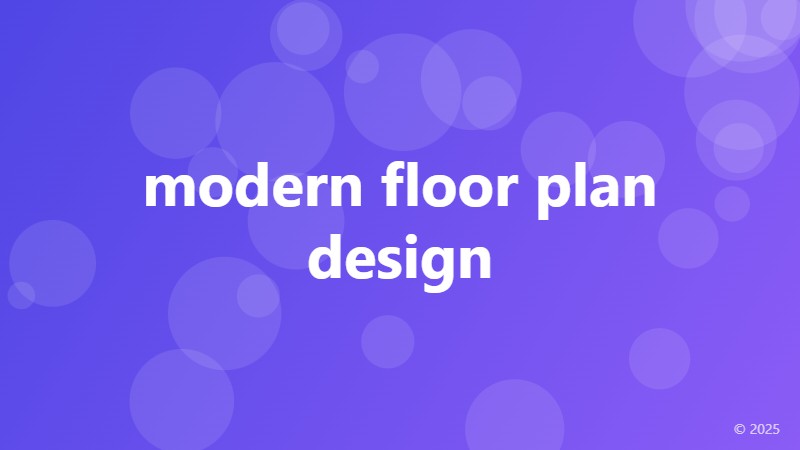modern floor plan design

The Evolution of Modern Floor Plan Design
In recent years, modern floor plan design has undergone a significant transformation, driven by changing lifestyles, technological advancements, and shifting architectural trends. The traditional compartmentalized floor plan, with its separate living, dining, and kitchen areas, has given way to more open, flexible, and functional spaces. Today's modern floor plans prioritize flow, connectivity, and sustainability, creating homes that are not only aesthetically pleasing but also environmentally conscious and adaptable to the needs of modern living.
Key Features of Modern Floor Plan Design
A modern floor plan is characterized by several distinct features, including:
- Open-plan living: The elimination of traditional compartmentalization has given rise to open-plan living areas, where kitchen, dining, and living spaces flow seamlessly into one another. This design approach fosters social interaction, increases natural light, and creates a sense of spaciousness.
- Sustainable materials and practices: Modern floor plans often incorporate eco-friendly materials, such as reclaimed wood, bamboo, and low-VOC paints. Additionally, designers are incorporating passive design principles, like natural ventilation and insulation, to reduce energy consumption and environmental impact.
- Flexible and adaptable spaces: Modern floor plans are designed to be flexible and adaptable, with multi-functional areas that can be easily reconfigured to suit changing lifestyles and needs. This approach enables homeowners to create spaces that are tailored to their individual requirements.
- Connection to nature: Large windows, sliding glass doors, and outdoor living areas are hallmarks of modern floor plan design. These features create a seamless transition between indoor and outdoor spaces, fostering a connection to nature and promoting a sense of well-being.
The Benefits of Modern Floor Plan Design
The advantages of modern floor plan design are numerous, including:
- Increased functionality: By eliminating traditional compartmentalization, modern floor plans create more functional and efficient living spaces.
- Improved flow and circulation: The open-plan design approach facilitates easier movement and interaction between spaces, creating a more fluid and dynamic living environment.
- Enhanced natural light and ventilation: Large windows and sliding glass doors allow for an influx of natural light and fresh air, reducing the need for artificial lighting and heating and cooling systems.
- Increased property value: Modern floor plans are highly sought after by homebuyers, making them a valuable asset for homeowners looking to sell or rent their properties.
Conclusion
In conclusion, modern floor plan design has evolved significantly in recent years, driven by changing lifestyles, technological advancements, and shifting architectural trends. By incorporating open-plan living, sustainable materials and practices, flexible and adaptable spaces, and a connection to nature, modern floor plans create homes that are not only aesthetically pleasing but also functional, efficient, and environmentally conscious. Whether you're building a new home or renovating an existing one, incorporating modern floor plan design principles can enhance your living experience and increase your property's value.